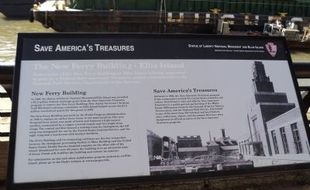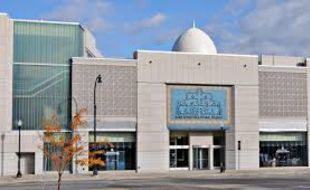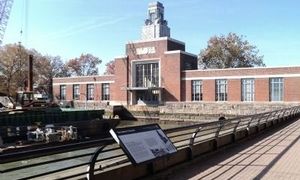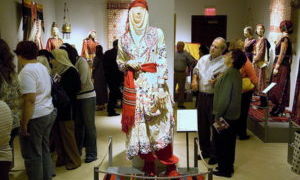"But Where Are You Really From?": How Region of Origin Affects U.S. Immigrants
Introduction
In the U.S. in 2019, there is a lot of stigma surrounding immigrants, with an emphasis on allegedly undocumented or illegal Hispanic immigrants. However, as this collection shows, both Hispanic and non-Hispanic immigrants of the past have been honored and celebrated through the creation of memorials and monuments across America. These memorials and monuments commemorate the journeys immigrants went through to get to the United States and the difficulties they faced upon arrival. Present immigrant groups still experience these same hardships; stereotypes against immigrants continue in the minds of Americans today. Furthermore, the regions of the world where immigrants come from, such as Europe, Asia, the Middle East, and Latin America, impact how Americans view them and what stereotypes are placed onto them.
European Immigrants
European immigrants largely came to the U.S. through Ellis Island in the 19th and 20th centuries (Kelly and Morton). “The New Ferry Building” archive at Ellis Island honors those immigrants who came into America through the Ellis Island immigration station. This is one of many archives in the collection dedicated to European immigrants of the past.
Another monument dedicated to those who immigrated through Ellis Island is “Calling Up Annie Moore,” a statue in the Ellis Island museum. In 1892, Annie Moore was the first immigrant processed through the Ellis Island Immigration Station at the age of 15. Annie Moore was the depiction of the “American Dream”; she immigrated to America from Ireland, got married, moved west, and had first-generation American children. Through displaying this statue, “The Museum thus seems to create and preserve a period of 'ideal' immigration to the USA.” The monument represents the “so-called golden age of European immigration to the USA in the late nineteenth century” and the “privileged narrative of European immigration” (Kelly and Morton). The Ellis Island memorial and museum continued the historical, idealistic idea of the American dream and American immigration, which could not be farther from the truth of immigration in America today.
Although European immigrants of the past are now viewed positively and honored by Americans and historical societies, the same cannot be said for American immigrants of today. Many Americans hold stereotypes against immigrants that can differ depending on where the immigrants come from. In their study “Stereotypes of U.S. Immigrants from Four Global Regions,” Timberlake and Williams assess a population of Americans on their views regarding immigrants from Europe, Asia, the Middle East, and Latin America. They found that region of origin and ethnicity does impact how U.S. immigrants are viewed by Americans.
European immigrants of the 21st century are generally viewed positively by American populations, and they are perceived as able to fit in with native-born Americans, average in socioeconomic status, non-violent, self-supporting, and intelligent (Timberlake and Williams). European immigrants also arouse low levels of suspicion of illegality (Flores and Schachter), which is a large factor in how immigrants are currently viewed in America.
Asian Immigrants
Second to monuments dedicated to European immigrants, there is also a large amount of memorials to Asian immigrants in the collection. The Angel Island Immigration Station in San Francisco welcomed thousands of Asian immigrants to America in the early 20th century, but also served as an immigrant detention facility. Now, its detention barracks have been converted into a museum that honors and remembers immigrants from countries all over Asia, including China, Japan, Indian, and the Philippines.
When these immigrants arrived in the 20th century, they were looked down upon by white Americans who hadn’t had much previous contact with Asian people and who associated Asians with wars and violence. Today, Asian immigrants are received generally positively by Americans and are seen as average at fitting in with Americans, average in socioeconomic status, non-violent, self-supporting, and highly intelligent (Timberlake and Williams). Additionally, Asian immigrants aren’t likely to be suspected of illegality (Flores and Schachter); by these standards, American opinions of European and Asian immigrants seem very similar and overall positive.
Middle Eastern Immigrants
Immigrants from the Middle East have started coming the United States more recently than European or Asian immigrants, and many people from the Middle East coming to America in the 21st century are refugees. The Arab American National Museum is the first and only museum dedicated to honoring Arab American history and culture. Because Middle Eastern immigration into the U.S. is more recent and still very prevalent, there are less sites memorializing these immigrants.
In the survey conducted by Timberlake and Williams, Middle Eastern immigrants were viewed as less likely to fit in with American groups, average in socioeconomic status, averagely non-violent, self-supporting, and intelligent. These results are somewhat across-the-board and don’t give a clear picture of how Middle Eastern immigrants are seen by the average American. This could be due to political controversies surrounding the Middle East and Middle Eastern people.
After 9/11, Middle Eastern immigrants began to be viewed negatively by Americans and were seen as dangerous and violent, particularly by more conservative Americans. Additionally, liberal, urban, and wealthier Americans are more likely to view Middle Easterners positively (Timberlake and Williams). Middle Eastern immigrants are also more likely to be suspected of illegality than European or Asian immigrants, which can contribute to a more negative image overall (Flores and Schachter).
Latin American immigrants
In the 20th and 21st centuries, America has become a destination for many Latin American immigrants, especially immigrants from Mexico. Although there are memorials and monuments in the United States that honor Latin Americans and Mexican Americans, immigration into the U.S. isn’t usually included in that dialogue. The Hispanic Society of America in New York is dedicated to honoring the history and culture of Latin America in America, but has little to no representation concerning Latin American immigration into the U.S. This may be because immigration into America from Mexico and other Latin American countries is currently in action and still prevalent across the United States. However, Americans’ views on Latin American immigrants are also currently very controversial, and Latin American immigration, particularly illegal immigration from Mexico, is a highly debated political topic in the U.S today.
Latin American immigrants, particularly immigrants from Mexico, are generally viewed negatively by American populations and are seen as unlikely to fit in with Americans, having low socioeconomic status, averagely non-violent, not self-supporting, and averagely intelligent (Timberlake and Williams). These ratings for these categories in Timberlake and William’s study are far more negative than those for European, Asian, and Middle Eastern immigrants.
Additionally, Latin American immigrants receive the highest rates of suspicion of illegality from Americans; Mexicans are highly suspected of being undocumented, especially in Western states. Currently, there are more than 11 million undocumented immigrants in the U.S., and around 50 percent of these illegal immigrants are from Mexico. While there is growing diversity in the population of undocumented immigrants in the United States, Hispanic immigrants are still the most likely to be suspected of illegality (Flores and Schachter).
The heightened stereotype of illegality against Latin American immigrants can be attributed to a number of factors. Many Americans rely on stereotypes, not documentation, to “determine” illegality, which is known as the “social construction of illegality” or “social illegality.” In America, there is an “elite rhetoric of social illegality” that focuses on “Mexican illegals” and uses Hispanic immigrants as the faces of undocumented immigrants. Latino or Mexican immigrants are often framed as undocumented by the media and are victims of a “Latino threat narrative” in the United States; Donald Trump has described all Mexican immigrants as criminals, rapists, and drug dealers. These false accusations that are not backed by evidence contribute to the negative American perception of all immigrants, but particularly Latin American and Hispanic immigrants.
Conclusion
Immigrants are a large part of American culture and America’s population in the 21st century. However, as European immigrants were negatively received a hundred years ago, immigrants today are still targeted by Americans. European and Asian immigrants in the 21st century are generally well-received by Americans and are rarely suspected of illegality. Middle Eastern immigrants are averagely-received by Americans and may be seen as more violent or less likely to fit in due to political affiliations. Latin American immigrants are viewed particularly negatively and have the highest rates of suspected illegality. These stereotypes hold us back as a modern, diverse society in a developed nation and further negativity and hatred towards differences and positive change.
Works Cited
Kelly, Susan, and Stephen Morton. “Annie Moore and the Archives of Displacement: Towards an Immigrant History of the Present.” Social & Cultural Geography, vol. 5, no. 4, Dec. 2004, pp. 633–650. EBSCOhost, doi:10.1080/1464936042000317749.
Timberlake, Jeffrey M., and Rhys H. Williams. “Stereotypes of U. S. Immigrants from Four Global Regions.” Social Science Quarterly (Wiley-Blackwell), vol. 93, no. 4, Dec. 2012, pp. 867–890. EBSCOhost, doi:10.1111/j.1540-6237.2012.00860.x.
Flores, René D., and Ariela Schachter. “Who Are the ‘Illegals’? The Social Construction of Illegality in the United States.” American Sociological Review, vol. 83, no. 5, Oct. 2018, pp. 839–868. EBSCOhost, doi:10.1177/0003122418794635.








